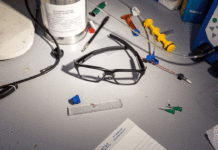
SAS (Statistical Analysis System) is serving to rescue, maintain, and support one of the most important agricultural products, i.e. Honey bee with its complex statistical analysis and report writing for a better world.
As reported by the ABC News, Honey bees support about $20 billion worth of crop production in the United States as being no.1 crop pollinator of vegetables, fruits, and flowers.
Honey bees are currently facing many challenges including both biotic as well as abiotic factors. According to national geographic, bee colonies are facing “Colony-collapse disorder” over the past 15 years.
The decline in the number of bee colonies is a serious matter to take into account with regards to crop productions as, without Honey bees, many of the food crops would die. Reduction in the Honey bee population ultimately leads to a decline in crop population. This would be a devastating loss for the human food supply. The major reasons for this decline is poor management practices, environmental risks, poor nutrition as well as Pesticides, and disease outbreak within the hive.
To meet this challenge, SAS has a great commitment to help grow a greater number of beehives, helping honey bees from becoming extinct and to support a greater number of the healthy bee population. Using its technology, SAS has been working on different projects to improve breeding populations and increase in their numbers as well, which can help us save and protect their population.
Monitoring Real-time Conditions:
Monitoring real-time conditions are one of the master plans, highlighted by SAS to track, trace, and monitor Honey bee populations which include maintenance of temperature, light, humidity, etc which helps a lot in precise beekeeping and improving pollinator population.
Optimum temperature carries vital importance for the bee colonies along with allowing the brood to develop normally. Weather condition is also a factor contributing to locating food by altering the quality and the quantity of the resources obtained. Humidity is another vital factor for both brood and adult to maintain support for a healthy bee population. The moisture level is necessary to be taken into account not to get dehydrated during the flight.
SAS is using machine learning algorithms, digital signal processing tools, and auditory data available in SAS Event Stream Processing and SAS Viya software to help maintain these physical conditions to secure this critically important part of our ecosystem for the welfare of mankind.
Decoding of bee communication:
SAS, along with its other projects is also working for decoding of bee communication. As honey bees being sensitive to pheromones, form cognitive maps of their surroundings thus communicating the nature as well as the location of food sources. Whenever a bee finds a food source, it rushes back towards its hive in order to communicate the exact location where they found the food source. This communication is accomplished by dances commonly known as “waggle dance”. SAS Viya Hackathon Winners, with the help of machine learning, decoded this communication to maximize their food access and to maintain strong colonies which would in turn benefit mankind’s food supply.
Training machine algorithms are used to decode this dance, recorded from inside the hive using a camera. This helps to find their food location and a better-suited environment if the need arises to conserve their population and ultimately increasing product ratio obtained through Honey bees to benefit us all.

Visualizing World Bee Population:
SAS is using advanced analytics and artificial intelligence to visualize world bee population data to protect and restore healthy honey bee habitat which ultimately leads to a larger and healthier honey bee population. This visualization maps out all the bees counted around the world to provide insight regarding the constraints that lead to healthier bee colonies.
CARE ( Center for Analytics Research and Education) initiated a lead known as World Bee Count. The motive of the World Bee Count is to crowdsource bee data by the citizens across the world in order to know about the causes of the decline in the bee population.
Queens have been responsible for 25-40% losses of beehives in the U.S.Manually inspecting a colony is timely and arduous. In order to get over this issue, analysts from the SAS are developing a bioacoustic monitoring system ( a non-invasive method to study populations and communities) which warns the beekeepers as a queen leaves the colony.
Stream-machine learning:
For streaming hive data and to continuously measure weight, temperature, humidity, acoustics, and flight activity, SAS is using stream machine learning which demands bridging sensors to the hives for this streaming and to listen to the hive sounds which includes buzzing. Buzzing is an indication of health, swarming activities, and stress levels. In a collective effort, a technical system is developed in partnership with Beefutures which is automatically proficient to detect and map “waggle” dances.
Stream machine learning models are used to listen for anomalies. In order to make it clear if the bees are content, it is needed to make sure that only the hum of the hive is analyzed. Microphones that are adjusted within the hive will record not only the sounds of the hive but also sounds from outside surrounding which may include sounds of airplanes and trains. To overcome this problem, a technique known as RSPCA( Robust Principal Component Analysis) is being used which ensures the separation of irrelevant noises from the hive sounds that is greatly beneficial to beekeepers.
In addition to this, electronic hive scales are being widely used to measure weight gained or lost in the hives which indirectly indicates honey production. These hive scales are connected to the internet for recording changes in weight for each minute. When the weight exceeds 30lbs, it is suggested to extract it.
Further research on advanced analytics may discover many other undiscovered aspects, help us understand the best ways to save honey bees, their habitat, find innovative ways to raise healthier honey bees. We can find answers to the questions still unknown. This project is for the well-being of mankind.
May 20, 2020



























